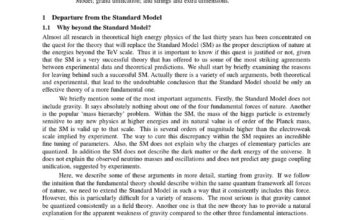The realm of physics continually offers astonishing insights into the fundamental properties of matter, thereby compelling humanity to reassess its understanding of the universe. One such captivating phenomenon is known colloquially as “Hot Ice,” or more scientifically as sodium acetate trihydrate. This intriguing substance defies conventional expectations about the state and behavior of ice, challenging the traditional dichotomy of solid and liquid. The observation and subsequent experimentation with Hot Ice not only promise a shift in scientific perspective but also ignite curiosity regarding its myriad applications across diverse fields.
Hot Ice is not ice in the typical sense; rather, it is a supercooled solid that possesses unique thermal properties. When sodium acetate trihydrate is heated above its melting point, it exists in a liquid state. Upon cooling, if the substance is undisturbed, it can remain in a liquid form even below the freezing point of water, effectively entering a metastable state. This bizarre characteristic can be attributed to the absence of nucleation sites that would ordinarily catalyze crystallization. However, upon introducing a small disturbance—such as triggering a crystal or providing a seed—the liquid rapidly crystallizes, releasing latent heat in a rapid exothermic reaction. This phenomenon is often demonstrated in practical experiments, such as in reusable instant hand warmers, where the rapid formation of solid crystals occurs upon activation.
The first documented observation of this phenomenon dates back to the 1960s, yet it remains a topic of immense interest. Scientists and researchers marvel at how it elegantly bridges the realms of thermodynamics and phase transitions, illustrating the complexities inherent in what might otherwise seem like innocuous substances. The realization that a material can exist in a state below its freezing point without solidifying invites discussion about the fundamental principles governing phase behavior. Such observations compel physicists to contemplate the underlying mechanisms that dictate the arrangements of molecules in states of different energy levels.
Furthermore, the thermodynamic principles of supercooling and crystallization extend far beyond mere academic curiosity. One promising application involves the enhancement of thermal management systems. By integrating Hot Ice into thermal regulation devices, such as in cryotherapy or pharmaceuticals, researchers can leverage its capacity to absorb and release heat efficiently. Energy storage systems could also benefit from this phenomenon, as Hot Ice can store heat energy and release it gradually, providing an innovative solution for energy conservation and release in various technologies.
Moreover, Hot Ice’s unique properties make it a compelling subject for educational demonstrations. Science classrooms can utilize the excitement generated by the rapid crystallization of Hot Ice to illustrate complex scientific principles through hands-on experimentation. Such demonstrations not only captivate students’ imaginations but also imbed critical thinking skills regarding physical transformations and energy exchanges in their minds.
Yet, the implications of this phenomenon extend beyond practical applications and educational contexts. The observation of Hot Ice also serves as a metaphorical reflection on the broader scientific exploration. It underscores the importance of observation, experimentation, and serendipity in scientific inquiry. Often, it is the unexpected results that yield the most fruitful avenues for research and development. The peculiar properties of Hot Ice serve as a reminder that nature frequently operates outside human expectations, posing challenges that necessitate deeper exploration of molecular behavior and energy interactions.
There is also an interdisciplinary angle to consider. The phenomenon prompts collaboration among chemists, physicists, and material scientists. Collective research efforts may not only deepen the understanding of sodium acetate trihydrate but may also lead to the discovery of new materials with similar properties. Interactions among various scientific disciplines can engender innovation, pushing the frontiers of knowledge further into uncharted territories. This entanglement could, in turn, open new avenues for technology in fields ranging from environmental science to biomedical engineering.
As research on Hot Ice and similar materials progresses, a plethora of questions arises. How might the processes observed within Hot Ice translate to other materials? Could similar principles be applied in the study of less understood phenomena, such as superfluidity or the behaviors of exotic states of matter? The curiosity sparked by this seemingly simple substance illustrates how foundational it is to scientific inquiry—the quest to understand the unknown continuously propels the advancement of science.
In conclusion, the first observation of Hot Ice and its idiosyncratic properties not only serves as a focal point for academic inquiry but also as a catalyst for curiosity and interdisciplinary collaboration. As this field of research evolves, it possesses the potential to reshape our understanding of thermodynamics, phase transitions, and material science. The implications extend beyond theoretical concerns, pushing against the boundaries of practical application and innovation while reminding us of the unpredictable nature of scientific discovery. Ultimately, the exploration of Hot Ice embodies the wider narrative of science—one driven by curiosity, wonder, and an unyielding quest for knowledge.












